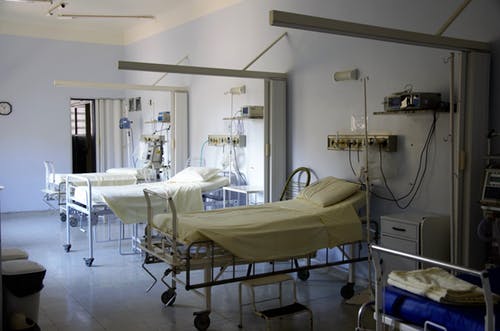
| CDN DIGITAL FILE PHOTO
CEBU CITY, Philippines–A study from the University of the Philippines (UP) COVID-19 Pandemic Response Team titled Estimating Local Healthcare Capacity to Deal with COVID-19 Case Surge: Analysis and Recommendations revealed that Central Visayas could be facing shortage of hospital beds if the coronavirus disease 2019 (COVID-19) crisis peaks.
UP said the study was intended to illustrate possible scenarios regarding healthcare capacities as the number of COVID-19 cases in the country continue to rise, and to further explain on the need to #FlattenTheCurve.
“Should the number of infected people rapidly rise, there may come a time when the hospital care resources will be overwhelmed,” stated UP.
They noted analysis was done with the assumption that approximately 80 percent of the existing hospital beds are already occupied by patients with other illnesses.
Experts from the country’s national university projected that Central Visayas could have at least 414 COVID-19 patients who will be admitted to Intensive Care Units (ICU) in ‘a peak COVID-19 crisis scenario’.
”In a scenario at the peak of the COVID-19 crisis, where a COVID-positive person can infect two others (R0=2), our simulations show that about 51,933 Filipinos will need hospitalization,” the study stated.
However, UP warned that there would not be enough ICU beds to accommodate such possibility in Central Visayas, adding that it only has 164 ICU beds.
“There is a lack of available critical care beds because across the country, there are only a little over 2,000 ICU beds to cater to the projected 8,800 to 19,800 critical COVID-19 cases,” the team added.
In terms of severe and critical cases, UP found out that there are 5,286 beds from Level 2 and 3 hospitals available for Central Visayas.
They are projecting that the region could be suffering from ‘mild shortage’ when the COVID-19 crisis peaks with 1,628 individuals needing hospital care.
The Philippines has a total of 67, 119 beds from the 456 Level 2 and 3 hospitals nationwide.
“Approximately 35,000 additional beds are required to accommodate the peak number of cases in a scenario wherein the reproductive number is 2. Certain regions (including Region 7) may need to stretch their capacities to accommodate the cases during the peak,” UP said.
Based on COVID-19 statistics made last April 16, researchers said most Filipinos, or around 81 percent who are infected with the virus, exhibit ‘uncomplicated or mild illness’ and do not need hospitalization.
This means that the remaining 14 percent who develop severe illness has to be admitted for oxygen therapy, and the 5 percent requiring ICU treatment.
Human Resource
Aside from actual hospital beds, UP also found out that the ratio between health practitioners – such as doctors, nurses and medical technologists – and the general public in Central Visayas is below the average recommendation of the World Health Organization (WHO).
In the region. the team said that for every 10,000 people, there are only 2.9 doctors, 9.9 nurses, 1.2 medical technologists, and 6.6 medical beds.
“There are, on the average, 3.7 doctors per 10,000 population in the Philippines. This is below the World Health Organization-prescribed ratio of 1 doctor for 1,000 persons (or 10 per 10,000),” UP said.
“If we are not able to “flatten the curve” or significantly reduce the transmission of the COVID-19 virus in the Philippines through the enhanced community quarantine ECQ, the healthcare system will be overwhelmed way beyond their capacity as clearly seen in the relatively low number of hospital and ICU beds,” they added.
As of Monday, the country has recorded 6,459 confirmed cases of COVID-19 with 613 recoveries and 428 deaths. Central Visayas has 191 confirmed cases with 23 laboratory negatives and nine deaths. /bmjo